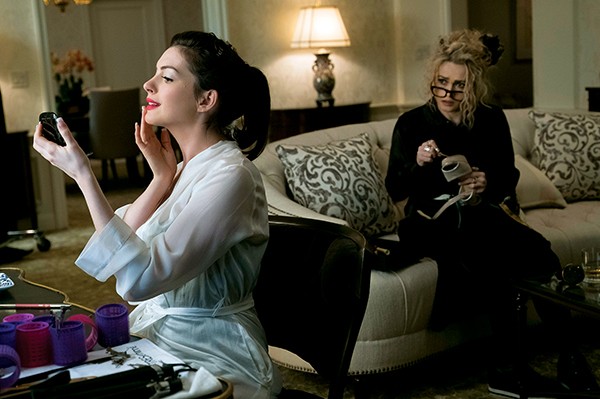What is the appeal of the heist movie? Is it about watching a supremely clever person concoct an elaborate plan, and then reveling in the OCD perfection when all the pieces click into place? Is it about the powerless getting one over on the powerful? Or is it all about the charisma of the criminal mastermind, a way for the audience to harmlessly indulge their need for a leader?
The history of heist pictures goes all the way back to the beginnings of American cinema, and they’ve always been popular. The Great Train Robbery held the record for highest grossing movie from 1903 until Birth of a Nation in 1915. It was also the subject of the first remake in history, when Edwin S. Porter’s original film was redone by Sigmund Lubin and released under the same title in the same year.
The only heist movie that’s been remade almost as often as The Great Train Robbery is Ocean’s 11. The original is a curious artifact: a massive vanity project put on by the Rat Pack as their Las Vegas decadence reached fever pitch. It’s not a great movie. Frank Sinatra is visibly distracted, while Martin is visibly drunk. It’s a bunch of celebrities cynically cashing in on their fame, best enjoyed by fans who are content just to look at their heroes.

Anne Hathaway and Helena Bonham Carter star in writer/director Gary Ross’ Ocean’s 8.
That’s one of the reasons Steven Soderbergh’s 2001 Ocean’s 11 remake was so surprising: It was actually a pretty good movie. Just as the original cemented the Rat Pack as the pre-eminent stars of the early 1960s, so too did Soderbergh’s Ocean’s 11 define the first batch of 21st-century superstars: George Clooney, Matt Damon, Brad Pitt, Don Cheadle, Bernie Mac, and Andy Garcia. Julia Roberts was the lone feminine presence to redeem the sausage fest.
Soderbergh took the barely-there plot of trying to rob a bunch of casinos at once and honed it to a razor edge. His editing was tight and cinematography outstanding. The 2001 Ocean’s 11 wasn’t just an object of fan admiration — although it unmistakably was on some level — but unambiguously good filmmaking. It’s trashy fun, but incredibly well executed.
A female driven remake was inevitable in the #MeToo era. The ragtag band of thieves camaraderie translates perfectly into the girl power moment, and high-powered talent agencies would love to see their clients put into the roles that women all over the world would imprint on. In the Sinatra/Clooney slot is Sandra Bullock as Debbie Ocean, the younger sister of Danny Ocean, who, we find out in the opening shots of the film, is dead. Probably.
The film gets off to a good start with Bullock faking sincerity in her parole hearing. She’s got the smooth prattle and irresistible charisma of the Ocean family down pat. Less than a day after being released from her five-year stint in the pen, she’s shoplifted a whole new wardrobe and fraudulently ensconced herself in a luxury hotel. Then, there’s the requisite gathering of the team: Lou (Cate Blanchett), a crooked New York nightclub owner; Amita (Mindy Kaling), a jeweler; Constance (Awkwafina) the pickpocket; a hacker known as Nine Ball (Rihanna); and Tammy (Sarah Paulson), a big time fence hiding out as a suburban mother of two. The plan, which Debbie came up with while in solitary confinement, is to steal a necklace called The Toussaint, valued at $150 million. To steal it, it has to be lured out into the open at the Met Gala, an annual, super ritzy fashion world party thrown by the Metropolitan Museum of Art. To do that, the gang targets Rose Weil (Helena Bonham Carter), a fashion designer drowning in debt, to convince superstar actress Daphne Kluger (Anne Hathaway) to use her clout to convince Cartier to let the necklace out of the vault so she can wear it for the party.
During the scenes inside the simulated Met Gala, Ocean’s 8 functions extremely well as lifestyle porn with a more propulsive plot than Fifty Shades of Grey. The actresses are rarely called upon to do much more than stand around and look cool, so heavy hitters like Blanchett and Paulson are out-cooled by a spliff-smoking Rihanna. In that way, Ocean’s 8 is much more like the 1960 Ocean’s 11 than the 2001 version. Unfortunately, director Gary Ross fundamentally lacks the Soderbergh snap that was on display in last year’s Logan Lucky. But if you’re just in it to look at some of the best actresses in the business pal around for a frothy summer treat, Ocean’s 8 will do just fine.